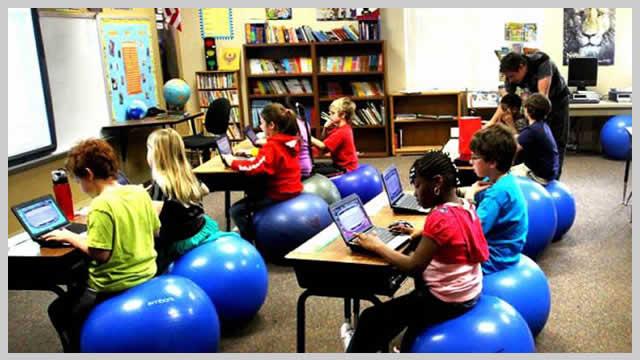The fear of the unknown is the biggest hurdle to the embracing of edtech in the classroom.
Most teachers today have little experience in the way of edtech because it isn’t a part of college curriculum or training that many seasoned educators have gone through. While there is recently a new push to integrate it into classrooms, it often can feel like another task to add to the ever growing to do list. Teachers should be eager to embrace edtech, however, because it makes teaching easier, and encourages students to be more engaged with lessons.
The 21st century classroom epitomizes technology. Today’s student has unprecedented technological literacy, and is eager to embrace their teacher’s use of various ed-tech platforms. Utilizing ed-tech embraces the interest of the students, and automatically grabs their attention. Edtech encourages a diversity of students to be excited about the lesson, whether it be by customizing avatars, or the ability to create their own presentations. Giving students a voice and a choice over their learning creates better learning outcomes and is central to the modern classroom.
Multiple intelligence classroom – The work of Howard Garnder described seven different learning styles, and classrooms are filled with learning diversity. Effective teaching includes these types of learners in your activities to ensure all students learning appetites are fulfilled. Edtech is essential in catering to the multiple intelligence classroom because technology hits all these styles at once. Kids can touch smart boards, play interactive games on a Chromebook, or dance along in movement based videos. Technology identifies and reaches more learners than any other kind of tool available in the classroom, and allows for a dynamic learning experience that directly benefits students.
Time efficiency - Prior to ed-tech, teachers had to make each learning station they wanted to have in their classroom. Now, iPads, desktop computers, and smart boards are all readily available with preloaded material that can be customized and used again and again. Right now, I’m teaching division to my students. I wanted to review all the skills we had learned to see where my students were at. Prior to ed-tech, we’d play Jeopardy, but I’d have to make it all on paper or do a PowerPoint, which was time consuming to create and manage in the classroom. Now, I can go online and search “division Jeopardy”, and find a plethora of different Jeopardy games already made and templates already completed. Teachers can easily share their work with others when uploading lessons is as simple as the click of a button. Edtech is also self-checking, so you don’t have to grade a bunch of papers, and gives students instant feedback to the work they’re doing.
Differentiation – Edtech has built in management systems, making it easy to see which students are exceling in the standard, and which ones need more work. After work is completed on a computer, software will tell me how students did on specific concepts. This student grouping allows me to customize lessons and learning stations for students who understand the material and can move on to more advanced work, and provide review material for the ones who are struggling. It’s simple, instant checking of work that makes differentiation second nature.
Student Success - Without using technology, we are setting students up for failure. Learning through technology is necessary in every facet of society because of the shift in worldwide computer usage and the need for computer skills in the workforce. Edtech is now the norm, as schools become more and more virtual. Equipping students with the abilities to become successful and knowledgeable adults is the core of a teachers job, and we would be remiss if we didn’t include technological literacy in the list of essential skills.
New teachers are now well versed in technology, and classrooms are being pushed to be paperless and technologically equipped. Because of the many benefits of edtech, teachers should embrace its usage with open arms. Schools districts and school boards need to prioritize funding for ed-tech and computer devices for every student. The integration of technology and teaching is inevitable, and teachers should not fear the opportunity for change. Embracing edtech as soon as possible will only better equip children to be successful further down the road. Students are eager to embrace new learning opportunities, and it’s our job as teachers to cater to the changing learning environment and ensure their success in the future.
